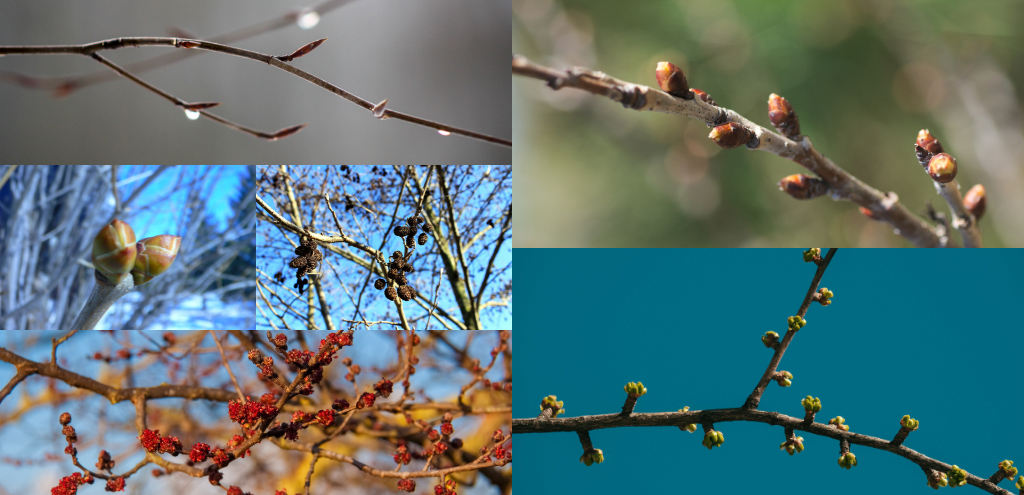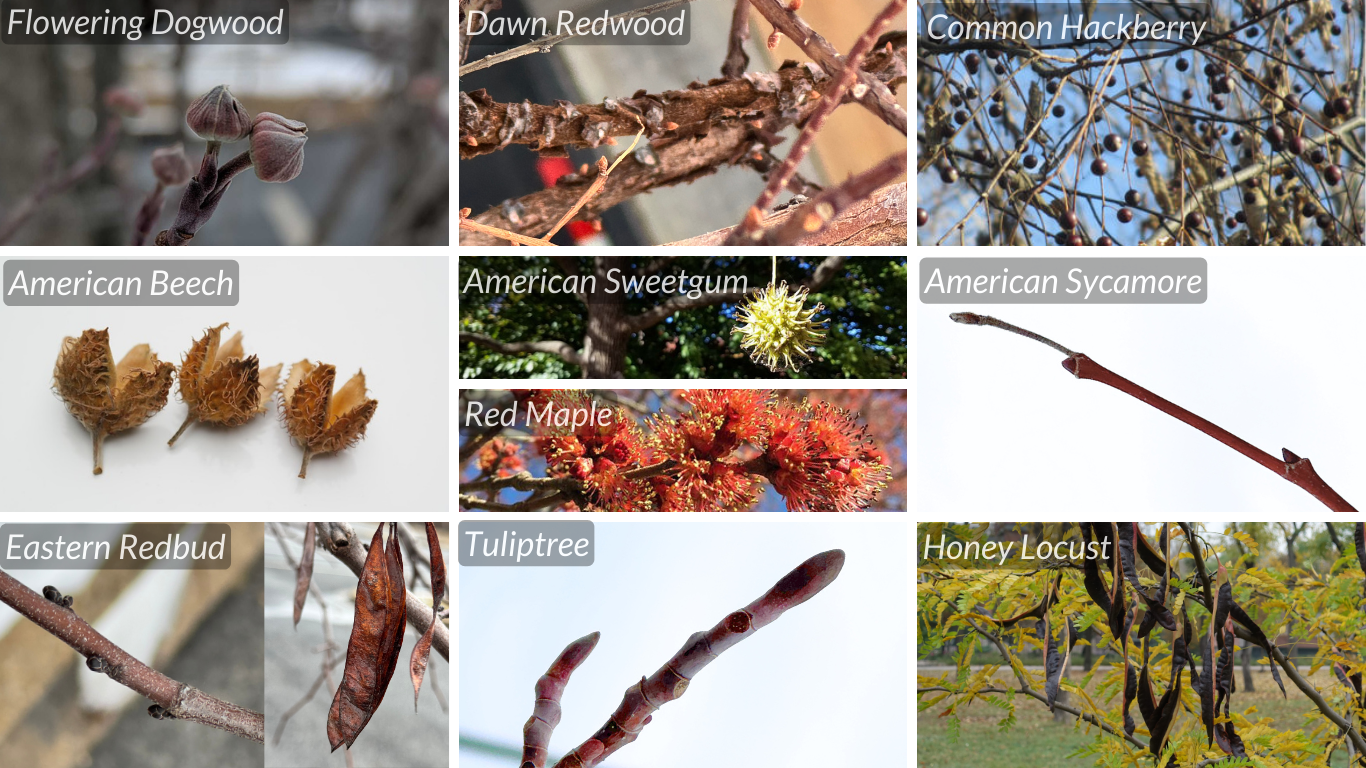THE LEAFLET

Winter Tree ID: Buds & Seeds
As we continue our Winter Tree ID series, we turn our attention to the fascinating buds and seeds of our city’s trees. These small yet significant features tell the story of trees preparing for spring while offering a lifeline to wildlife during winter’s chill. Buds hint at the flowers and leaves to come, while seeds pave the way for the next generation of trees, spreading and settling into the soil in readiness for warmer days. By paying attention to these often-overlooked details, we can gain a deeper appreciation for the quiet persistence of trees during the coldest months.
Bundle up, head outdoors, and explore some of the standout species you might encounter in the DC area this winter.
- Flowering Dogwood
 buds are small and rounded, resembling tiny onions perched at the tips of branches. These buds eventually burst into the iconic white or pink blooms that mark the arrival of spring. The tree’s red, berry-like seeds, often visible through winter, are a favorite snack for birds like robins and cedar waxwings.
buds are small and rounded, resembling tiny onions perched at the tips of branches. These buds eventually burst into the iconic white or pink blooms that mark the arrival of spring. The tree’s red, berry-like seeds, often visible through winter, are a favorite snack for birds like robins and cedar waxwings. - American Sycamores are easily identified by their round, spiky seed balls that dangle from long stems. These seed balls persist on the tree through winter before breaking apart in early spring, releasing seeds to the wind. Look for the buds tucked neatly into the leaf scars along its zigzagging twigs.
- Sweetgum trees are known for their spiky, woody seed balls, which litter the ground like nature’s marbles. These seed balls contain small seeds that feed wildlife like finches and squirrels. The tree’s shiny, conical buds hint at the star-shaped leaves to come.
- Tuliptree buds are smooth, dark brown, and shaped like a duck’s bill, making them easy to identify. In winter, the seeds, contained in cone-like clusters, scatter, providing food for birds and other animals.
- Eastern Redbuds are a favorite for their early spring blossoms, but their buds and seeds offer a preview of their beauty. The dark, rounded buds are clustered along twigs, while its flat, bean-like seed pods can often be seen clinging to branches throughout winter.
- American Beech buds are long, slender, and pointed, often compared to a tiny cigar. These buds hold the promise of new leaves that will shimmer in spring. The tree’s triangular nuts, encased in spiky husks, provide vital sustenance for birds and small mammals during winter.
- Red Maple is one of the earliest bloomers. Its small, reddish buds give twigs a subtle glow against the winter landscape. The tree’s paired, winged seeds, known as samaras, may linger on the tree from the previous season, waiting to helicopter to the ground.
- Common Hackberry trees feature tiny, round buds nestled close to the twig. Their small, dark purple fruits, often called drupes, cling to branches well into winter and provide an important food source for birds.
- Dawn Redwood is a deciduous conifer with rounded buds and woody cones that resemble tiny ornaments. These cones shed their seeds in winter, ensuring the species’ propagation.
- Honey Locust buds are small and barely noticeable, often hidden along the ridged twigs. The tree’s long, twisted seed pods, however, are hard to miss. These pods provide food for deer and other wildlife, while also adding a unique aesthetic to winter landscapes.
Winter offers a unique opportunity to slow down and notice the finer details of trees. From the promise held within buds to the perseverance of seeds that sustain life, each tree has its own way of thriving through the cold. As we explore these features, we deepen our connection to nature and the seasonal rhythms that guide it.

As always, these trees are all available for us to plant in your yard for FREE through our planting programs. Join us next time as we explore the striking forms of winter trees and how their silhouettes tell stories all their own. Until then, keep observing, admiring, and connecting with the natural world around you!